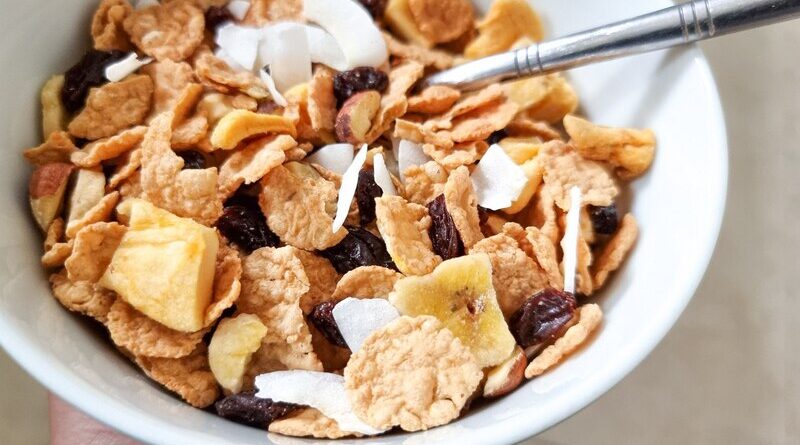Nourishing Your Mornings with High Fiber Gluten Free Cereal
High Fiber Gluten Free Cereal are a handy and wholesome choice for anyone trying to follow a healthier diet. Full of vital nutrients and free of gluten, these cereals appeal to those who are looking for gluten-free and dietary fiber at the same time. To ensure a healthy and balanced diet, this article examines the advantages, nutritional value, and useful hints for including high-fiber, gluten-free cereals into your daily routine.
Recognizing the Value of Fiber in Your Diet
Fiber is essential for preserving gut health and general well-being. It encourages regular bowel movements, lowers blood sugar, and gives you a feeling of fullness that helps you reach a healthy weight.
Furthermore, fiber lowers cholesterol and lowers the risk of cardiovascular disorders, both of which are beneficial to heart health. By including high-fiber, gluten-free cereals in your diet, you may maintain a healthy, balanced lifestyle by meeting your daily fiber requirements.
Advantages of Gluten-Free Cereal
Cereals without gluten have several advantages, especially for people who have celiac disease or gluten intolerance. These cereals are less likely to upset your stomach and are easier to digest because they don’t contain gluten.
They offer a wholesome and safe substitute for those who must stay away from grains like wheat, barley, and rye because they contain gluten.
Cereals free of gluten can also help you maintain a varied and well-balanced diet by providing you with the necessary nutrients without sacrificing flavor or texture.
The Nutritious Elements of High-Fibre Cereal
Gluten-free cereals with a high fiber content are full of vital nutrients that promote general health. They usually have high dietary fiber content, which promotes healthy digestion and cholesterol regulation.
These cereals frequently contain minerals like iron and magnesium as well as vitamins like B vitamins (including folate and niacin), which are vital for several body processes. Their nutritional worth can also be increased by fortifying them with extra nutrients like calcium and vitamin D.
Types of Gluten-Free Grains Used in Cereal
A range of gluten-free grains, each with their nutritional advantages, are frequently used to make high-fiber gluten-free cereals. Frequently utilized grains consist of:
- Oats: Packed with soluble fiber and a healthy dose of minerals and vitamins.
- Quinoa: A complete protein that includes fiber, iron, and all of the essential amino acids.
- Brown Rice: Rich in fiber and offers vital elements like selenium and manganese.
- Buckwheat: It’s unrelated to wheat and rich in antioxidants, fiber, and protein.
- Millet: Rich in nutrients and high in antioxidants and B vitamins.
- Sorghum: Rich in antioxidants, protein, and fiber.
These grains offer high-fiber, gluten-free cereals a wholesome foundation, making them a tasty and healthful morning choice.
Choosing the Best High Fiber Gluten-Free Cereal
To make sure you’re choosing a nutrient-dense high-fiber gluten-free cereal, take into account the following factors:
- Fiber Content: Seek cereals with three to five grams of fiber per serving or more.
- Whole Grains: Choose cereals where the first ingredient is listed as whole grains.
- Low Sugar: To encourage improved blood sugar regulation, select cereals with the fewest added sugars possible.
- Nutrient Fortification: Look for cereals that include added vitamins and minerals, such as calcium, iron, and vitamin D.
- Ingredients: Steer clear of cereals that have artificial preservatives and additives.
Incorporating High Fiber Cereal into Your Diet
High-fiber, gluten-free cereal is easy to include in your regular diet and has a lot of health benefits. It’s something you can enjoy:
- As a Breakfast Option: Have a bowl of high-fiber cereal with fresh fruit and nuts on top to start your day.
- As a Snack: Put it in tiny Tupperware for an easy and wholesome snack.
- In Recipes: Crustacean can be a component in homemade energy balls or granola bars.
- With Yogurt: To add more crunch and fiber to yogurt, sprinkle cereal on top.
Recipes and Serving Suggestions
To improve your meals, try these delectable recipes and serving ideas including high-fiber, gluten-free cereals:
- Homemade Granola: Combine nuts, seeds, and honey with high-fiber cereal, and bake until it turns golden brown.
- Smoothie Bowl: For a meal that is high in nutrients, blend cereal with fruits, yogurt, and a little bit of milk.
- Energy Bars: To make homemade energy bars, mix cereal, nut butter, honey, and dried fruits.
- Cereal Parfait: Arrange cereal, yogurt, and fresh berries in a layer for a filling and healthy snack or dessert.
Gluten-free cereals with high fiber content are a delightful supplement to any diet, as demonstrated by these recipes and serving ideas that highlight their adaptability and nutritional worth.
Conclusion
In conclusion, for individuals trying to stick to a healthier diet, high-fiber, gluten-free cereals are an easy and wholesome option. These gluten-free, nutrient-dense cereals are especially helpful for people who have celiac disease or gluten intolerance. You can manage your weight, lower your risk of heart disease, improve intestinal health, and control blood sugar levels by implementing them into your daily routine.
These cereals offer a tasty and nutritious option for breakfast or snacks, with a range of grains to select from that are enhanced with extra nutrients, helping to ensure a varied and well-balanced diet.
You Can Read More About Cereals
Unlocking Healthier: Low Carb Raisin Bran Cereal Secrets
